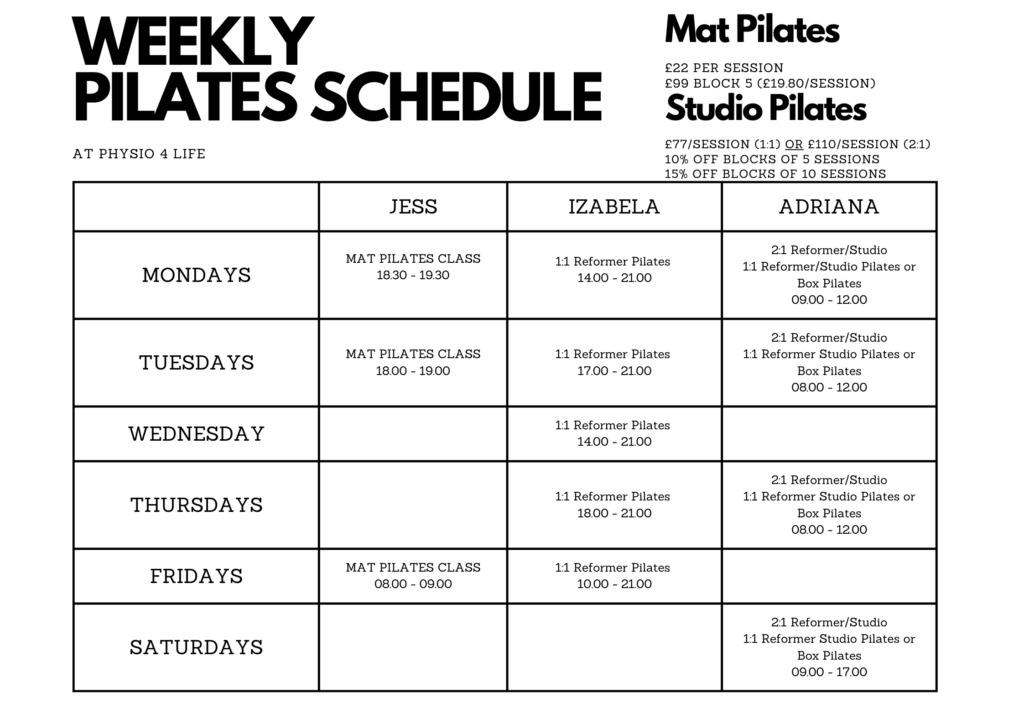
What are the Benefits of Pilates?
Pilates is a popular exercise method that offers a wide range of benefits for both the body and mind. Here are some of the key advantages of practicing Pilates:
1. Improved Core Strength: One of the primary focuses of Pilates is strengthening the core muscles, including the abdominals, back, and pelvic floor. A strong core is essential for maintaining proper posture, preventing back pain, and improving overall stability and balance.
2. Increased Flexibility: Pilates exercises are designed to improve flexibility and joint mobility. By elongating and stretching the muscles, Pilates helps to increase range of motion, reduce muscle tension, and improve overall flexibility.
3. Better Posture: Poor posture is a common issue in today’s sedentary lifestyle. Pilates helps to correct postural imbalances by strengthening the muscles that support the spine and promoting proper alignment. Regular Pilates practice can lead to improved posture, reduced back pain, and increased body awareness.
4. Enhanced Body Awareness: Pilates emphasizes the mind-body connection, promoting body awareness and mindfulness. By focusing on proper alignment and controlled movements, Pilates practitioners develop a greater understanding of their bodies and how they move.
5. Injury Prevention and Rehabilitation: Pilates is often recommended as a form of rehabilitation for individuals recovering from injuries or surgeries. The low-impact nature of Pilates exercises, combined with its focus on core strength and stability, makes it an ideal choice for injury prevention and rehabilitation.
6. Increased Muscle Tone and Strength: Pilates exercises target specific muscle groups, helping to tone and strengthen the body. By using resistance and controlled movements, Pilates builds lean muscle mass, resulting in a more sculpted and defined physique.
7. Stress Relief: Pilates incorporates mindful breathing techniques and encourages mental focus, which can help reduce stress and promote relaxation. The controlled movements and emphasis on body awareness create a meditative-like experience, allowing practitioners to disconnect from daily stressors and find inner calm.
Pilates Workouts
Pilates workouts can be done in various settings, including studios, gyms, or even in the comfort of your own home. There are two main types of Pilates workouts: mat-based Pilates and equipment-based Pilates.
Mat-based Pilates involves performing a series of exercises on a mat, using your body weight as resistance. These exercises focus on core strength, flexibility, and body alignment. Mat-based Pilates is accessible to people of all fitness levels and can be modified to suit individual needs.
Equipment-based Pilates utilizes specialized equipment, such as the reformer, Cadillac, or chair. These machines provide resistance and support, allowing for a more challenging and dynamic workout. Equipment-based Pilates is often recommended for individuals looking to build strength, increase muscle tone, or rehabilitate from injuries.
Health Conditions and Pilates
Pilates is a versatile exercise method that can be adapted to accommodate various health conditions. Here are some examples of how Pilates can benefit specific health conditions:
1. Back Pain: Pilates exercises focus on strengthening the core muscles, which can help alleviate back pain and improve spinal stability. The emphasis on proper alignment and posture also contributes to reducing back pain.
2. Osteoporosis: Pilates can be modified to suit individuals with osteoporosis by incorporating weight-bearing exercises and focusing on proper alignment to improve bone density and reduce the risk of fractures.
3. Arthritis: Pilates exercises can help improve joint mobility, reduce stiffness, and strengthen the muscles surrounding the joints, providing relief for individuals with arthritis.
4. Pregnancy: Pilates is a safe and effective form of exercise for pregnant women. It helps strengthen the core muscles, improve posture, and maintain flexibility, which can aid in a more comfortable pregnancy and smoother delivery.
5. Stress and Anxiety: Pilates incorporates breathing techniques and mindfulness, which can help reduce stress and anxiety. The focus on body awareness and controlled movements creates a calming effect on the mind.
It’s important to consult with a qualified Pilates instructor or healthcare professional before starting Pilates if you have any specific health concerns or conditions. They can provide guidance on modifications and exercises that are suitable for your individual needs.
In conclusion, Pilates offers a multitude of benefits for both the body and mind. From improved core strength and flexibility to enhanced body awareness and stress relief, Pilates is a holistic exercise method that can be enjoyed by individuals of all ages and fitness levels.
So why not give it a try and experience the transformative power of Pilates for yourself?
Our Pilates Class – What To Expect
We offer a 1 to 1, 60min Pilates Assessment in our lovely Studio with our Polestar certified Pilates Instructor Adriana, or alternatively you can join one of our Senior Physiotherapists Jessica’s Mat Pilates sessions. These initial sessions enable us to observe and assess your current condition to then tailor future sessions to your abilities and goals. We require comfortable attire to be worn, such as sports leggings, exercise shorts, t-shirts or anything that makes movement possible. Please find our Weekly Pilates Schedule here:




